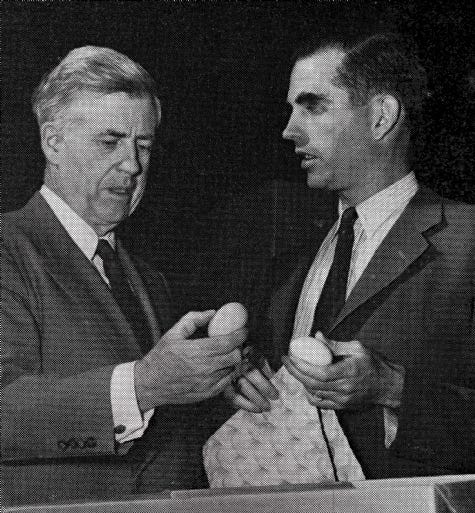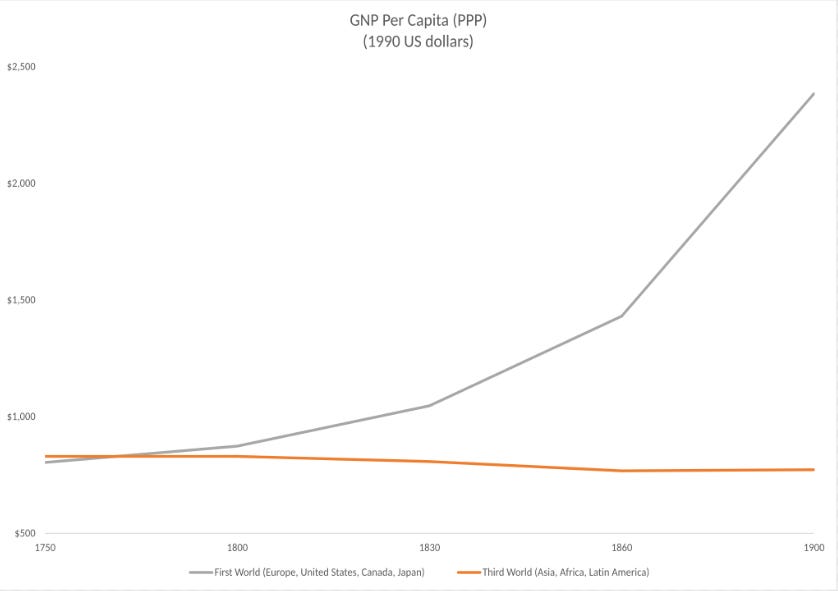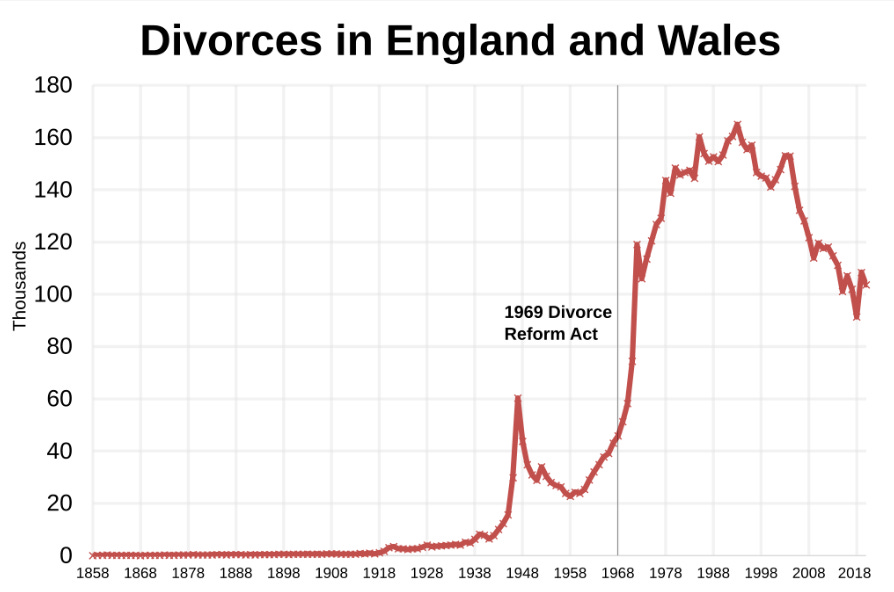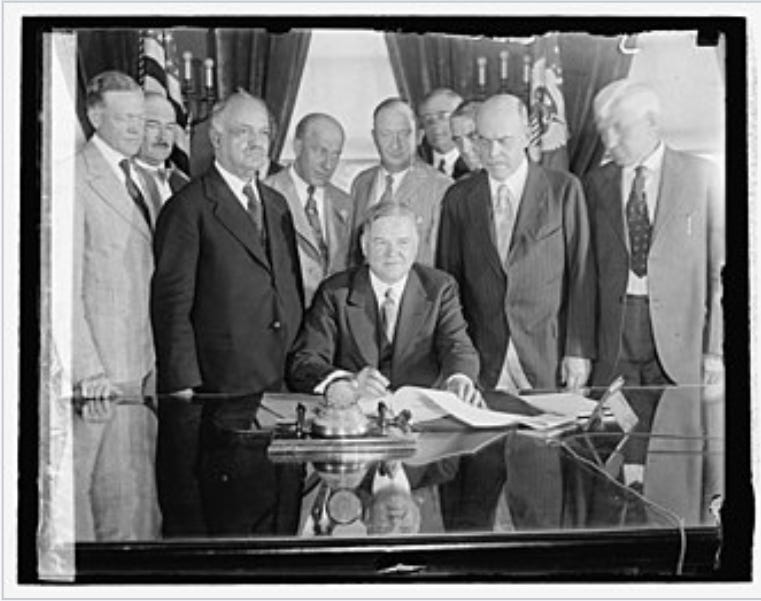Peeling Layers Off Poultry's History: Hy-Line for a Hy-Price
Part of Layer Farming Bootcamp: How western economies ran to riot with post-war consumerim and produced a generation of indentured egg farmers
Are you familiar with the phrase:
“To blur the lines.”??
“…to make the difference between two things less clear, or to make it difficult to see the exact truth about something.” - Cambridge Dictonary
Well, if it’s unclear now…
What WILL be abundantly clear and brought into focus at the end of this article is:
How layer farming has been (fixed) placed in a position disadvantage for the family farmer.
The History of the Layer Hen
Hy-Line (Breeder) Backstory
The #1 commercial egg-laying chicken breeder in the world today is Hy-Line.
And just in case you were wondering, it’s…
Hybridization.
(The Hy- in Hyline.)
Much like the Cobb broiler story, Hy-Line rose to prominence under the leadership of a founding pioneer family…
…in this case, The Wallaces.
(Source - Hyline.co.uk)
“The beginnings of Hy-Line International go all the way back to the turn of the last century when young Henry A. Wallace began doing genetic experimentation on his father's southern Iowa farm. From those early unsophisticated tries at genetic improvement came the dream that was to launch a new company and to eventually revolutionize all of agriculture through the powerful genetic principles [of] hybridization.” -Hyline.co.uk
But before we dive into the works of Henry A. Wallace, let’s just colour the backdrop a little and contextualise the timeline…
…the turn of the twentieth century marked the full turn of the Industrial Revolution and the start of Consumerism, led by the American economy.
Here’s how the two socio-economic phenomena juxtapose:
“Industrialisation (UK) or industrialization (US) is the period of social and economic change that transforms a human group from an agrarian (farming) society into an industrial society. This involves an extensive re-organisation of an economy for the purpose of manufacturing.” - Wikipedia
“Consumerism is a social and economic order in which the aspirations of many individuals include the acquisition of goods and services beyond those necessary for survival or traditional displays of status.[1] It emerged in Western Europe before the Industrial Revolution and became widespread around 1900.” - Wikipedia
The capitalist 1-2 knockout punch for society.
…transform a human group from an agrarian society into an industrial society
Followed by:
[get them obsessed with] acquisition of goods and services beyond those necessary for survival.
The switch.
Transform Take the inherited, multi-generational wealth of land and produce.
And get the people aspiring to hooked on vanities.
Precipitated by:
Years of loosening the grip of independent land-owning families through industrialising domestic production -i.e. depressing the value of manual labour (independence), by exposing markets to machine labour (corporation dependent).
War. Social economic trauma that displaced heads of households and shipped their wives and children off to be
occupiedfarmed for fixed incomes and education.
So, the result is in just over a century or so…
…what had been an economy entirely supported by truly independent family farms…
…became a concentrated playing field with only a handful of players with all the power.
This graph paints the perfect picture of what this did to the US and UK vs. the rest of the world:
(Source - Wikipedia)
Worlds apart by 1900, but neck and neck in the 1700’s.
In case you’re struggling to get what the numbers of the graph mean…
the Y-axis (up the left-hand side) shows monetary value from $500 to $2,500
the X-axis (along the bottom) shows dates by year from 1750 to 1900
The title of the graph is GNP or Gross National Product (in US Dollars)
The blue line represents First World economies (Europe, USA, Canada & Japan)
The red line represents (Asia, Africa & Latin America)
And for clarity, GNP Per Capita (Gross Nation Product Per Person) is an economic term and can be defined as:
“…the total value of all the final goods and services made by a nation's economy in a specific time (usually a year)…[divided by it’s population]” - Britannica
So, that’s to say that in the year 1775, GNP Per Capita or the total value of all goods and services made, divided by population, in BOTH First World and Third World countries was identical:
~$730.00 (per person)
But by 1900, (just 125 years later or four generations):
First World GNP Per Capita had risen to:
~$2,300.00 (per person)
Whilst Third World GNP Per Capita remained at:
~$730.00 (per person)
First World economies had begun producing at over 300% the rate of their former counterparts.
And how was this possible?
Well, it certainly wasn’t ‘organic’ or ‘manual’ growth - because if you produce 3x as much product manually, you’d require 3x as many labourers, so naturally GNP Per Capita would not budge.
It had to be ‘inorganic’, ‘artificial’, ‘automated or mechanised’ growth.
This is where the population doesn’t grow, but machines are manufactured to boost production massively, giving an inflated perception of national wealth.
And also, as an aside, if the population doesn’t grow why would you start making 3x as much anyway?
The answer is - you’d have no good reason to. So instead, they invent frivolous reasons impulses.
And such inflated practices and measures, leave First World economies feeling flattered and better off in comparison to their Third World cousins.
BUT, BUT, BUT…
…in reality,
What has actually happened is:
The capitalist 1-2 knockout punch for society.
…transform a human group from an agrarian society into an industrial society i.e. take their food & wealth…
Followed by:
acquisition of goods and services beyond those necessary for survival i.e. give them toys and addictions…
The switch.
Again - Transform Take the inherited wealth of land and produce from families.
And get thm aspiring to hooked on vanities.
Indenture.
Anyways - let’s pause our digression there and head back on over to Hy-Line and those ‘genetically superior’ layer hens.
“Founded in 1936, Hy-Line International was the first of the modern layer genetics companies to incorporate hybridization and the explosive potential of hybrid vigor into its breeding program on a commercial scale and to use it alongside time tested methods of genetic selection coupled with scientific statistical analysis to develop and improve one of the world's most extensive gene pools.”
Pioneers.
With a vision to ‘feed’ that nation that had conveniently been deprived of thousands of independent chicken farming families by that 1-2 punch….
…Hy-Line needed to engineer a chicken that would stand up to the ‘artificial’ economic demands of consumerism.
So, they bred an ‘artificial’ chicken.
Enter, the Hy-Line layer hen.
“Hy-Line geneticists, more than seven decades ago, developed the world's first hybrid egg-laying chicken produced on a commercial scale and through the decades have maintained and improved the genetic product through the use of time tested breeding techniques in combination with blood typing and other new genetic innovations to guarantee ongoing genetic superiority and consistency - bird to bird, variety to variety, generation to generation.”
Hybrid.
From ancient Greek - hybrizein "to wax wanton, run riot," - etymonline.com
Taking pure lines and blurring them…for gain.
Industrialisation had fragmented formerly intact agrarian or farm-owning households:
“In this view the farmer is idealized as self-sufficient and thus independent as opposed to the paid laborer who is vulnerable and alienated in modern society. Moreover, Agrarianism usually links working the land with morality and spiritualty and links urban life, capitalism, and technology with a loss of independence and dignity while fostering vice and weakness.” - Wikipedia
And multiplied public demand artificially, by way of displacing people from their natural order:
“Moreover, family structures tend to shift as extended families tend to no longer live together in one household, location or place.” - Wikipedia
Divorce being one of the biggest weapons of family fragmentation in our consumerist age:
(Source - BBC)
Aided by legal reform.
But focusing in on the 1930’s still….
…to fill the void left by former independent farm families turned industrial worker bees, big corporations owned by pioneer families who led the industrial-revolution and now lead the front on consumerism must invent ways of artificially boosting their ever-growing need for MORE.
Hence, genetic engineering.
And hybridization.
Turning nature’s chicken into an artificially bred, egg-laying machine.
“Hy-Line International's dedication to genetic excellence for over three quarters of a century has produced revolutionary breakthroughs in the science of poultry breeding that have not only benefited the worldwide egg production industry, but in so doing have helped to feed the earth's burgeoning human population.”
In other words, they’re claiming their work not only makes more money for farmers, but also has charitably kept the people of the world alive by feeding us all with eggs…
…REALLY?!!
“Building on our Heritage
Hy-Line International today is not only the world's oldest layer genetics company, but is the industry leader in all facets of our business.
From day one we have lived by our mission statement:
The people of Hy-Line International are dedicated to the development and distribution of superior layer varieties.
We continually invest in research and development to produce the best performing layers to meet our customers' needs and expectations
We support our customers with innovative management tools and technical expertise, allowing them to realize the full genetic potential of our products.
We foster an environment of continuous improvement for our people, products, and processes.
Guided by this core commitment, Hy-Line International today has developed a presence in the worldwide industry that has never been equaled.” - Hyline.co.uk
Indeed, ‘building on their heritage'.
Question is, at whose expense?
(Or is that actually a question at all??)
A hostile takeover by any measure.
And in true capitalist fashion, the game isn’t over until it’s truly over…
…until every conceivable grain (or drop of life) is firmly in their grip - territorially and industrially:
“Internationally, Hy-Line International has developed a distribution system that covers over 120 countries worldwide. Hy-Line brand brown and white egg birds are sold in the northern and southern hemispheres and from the arctic to the Antarctic through a network of national distributors, wholly owned subsidiaries and joint venture organizations.”
Their influence runs deep.
An entire supply chain - from breeder to the dinner table, in every international market - pocketed & pawned.
And as if things couldn’t have gotten any deeper…
Whilst we’ve had our focus on layers hens, guess what’s happened to the grain supply?
(That’s right, those little heaps of golden kernels that the birds devour at a rapid rate and that contribute 70% expense to all commercial poultry farms…)
Let’s return to that Wallace family - pioneers of Hy-Line…and Henry A. Wallace in particular (quotes from Miller Center Org):
“Henry Agard [Wallace], after finishing his studies in agriculture at Iowa State College, took over the editorship of Wallace's Farmer when his father departed for Washington, D.C.
In addition to editing, Wallace also experimented continually between 1913 and 1933 in breeding high-yielding strains of corn.”
That’s right…CORN too!
“In 1926, he created the Hi-Bred Corn Company, a firm which marketed the first high-yield, disease resistant corn for commercial sale.
Grow big - no sickness, corn…sound familiar?
“Although his family was traditionally Republican, Wallace gradually came to support the Democratic Party.
The tumult of the Great Depression and the plight of American farmers convinced him of the wisdom of government intervention, and by 1932 he was an enthusiastic supporter of Franklin Roosevelt.”
They picked up a scent.
“When Roosevelt took office, he made Wallace his secretary of agriculture, giving him the position his father just a few years earlier.
As secretary, Wallace oversaw the implementation of significant New Deal measures, most notably the Agriculture Adjustment Act (AAA) of 1933.
And then, they pounce for the kill…
…a New Deal - the counterparty too weak to resist the onslaught and gnashing of teeth.
“The AAA involved aggressive government measures to prevent overproduction and to control farm prices.”
(Source - Wikipedia)
What were the measures?
The destruction of crops and livestock…”
Wow!
From a the r/AskHistorians Reddit forum:
“In a pamphlet entitled Tenant Farmer, published in 1935, Erskine Caldwell describes a four year old girl dying of malnutrition and anemia, a six year old boy in the process of starving to death and "two babies, neither a year old, sucking the dry teats of a mongrel bitch." He goes on to write "The dog got up and shook herself and lay down several feet away. The babies crawled crying after her."
I read this some years ago in a book called Struggling to Shake Off Old Shackles and have never been able to shake it from my mind.
I have been looking for good statistics on this chapter of U.S. history. How many people died of hunger in the U.S. during the 1930s? If anyone could point me to a reliable source, I would be very much obliged.”
The following excerpt taken from a Steinbeck novel quoted in r/AskHistorians Reddit forum article entitled:
How extensive was the purposeful destruction of foodstuffs during the Great Depression?
“The works of the roots of the vines, of the trees, must be destroyed to keep up the price, and this is the saddest, bitterest thing of all. Carloads of oranges dumped on the ground. The people came for miles to take the fruit, but this could not be. How would they buy oranges at twenty cents a dozen if they could drive out and pick them up? And men with hoses squirt kerosene on the oranges, and they are angry at the crime, angry at the people who have come to take the fruit. A million people hungry, needing the fruit- and kerosene sprayed over the golden mountains. And the smell of rot fills the country. Burn coffee for fuel in the ships. Burn corn to keep warm, it makes a hot fire. Dump potatoes in the rivers and place guards along the banks to keep the hungry people from fishing them out. Slaughter the pigs and bury them, and let the putrescence drip down into the earth.
There is a crime here that goes beyond denunciation. There is a sorrow here that weeping cannot symbolize. There is a failure here that topples all our success. The fertile earth, the straight tree rows, the sturdy trunks, and the ripe fruit. And children dying of pellagra must die because a profit cannot be taken from an orange. And coroners must fill in the certificate- died of malnutrition- because the food must rot, must be forced to rot. The people come with nets to fish for potatoes in the river, and the guards hold them back; they come in rattling cars to get the dumped oranges, but the kerosene is sprayed. And they stand still and watch the potatoes float by, listen to the screaming pigs being killed in a ditch and covered with quick-lime, watch the mountains of oranges slop down to a putrefying ooze; and in the eyes of the people there is the failure; and in the eyes of the hungry there is a growing wrath. In the souls of the people the grapes of wrath are filling and growing heavy, growing heavy for the vintage.”
Aggressive alright.
And all to bring about an economic price adjustment…
…or was it?
“The Agricultural Adjustment Act (AAA) was a United States federal law of the New Deal era designed to boost agricultural prices by reducing surpluses. The government bought livestock for slaughter and paid farmers subsidies not to plant on part of their land. The money for these subsidies was generated through an exclusive tax on companies that processed farm products. The Act created a new agency, the Agricultural Adjustment Administration, also called "AAA" (1933–1942), an agency of the U.S. Department of Agriculture, to oversee the distribution of the subsidies.[2][3][4] The Agriculture Marketing Act, which established the Federal Farm Board in 1929, was seen as an important precursor to this act.”
The AAA…
“…paid farmers subsidies not to plant on part of their land.”
The Government paying farmers, NOT to farm.
And burning the excess food, to force the price of food to go up.
Speechless.
And look who’s paying?
Corporate taxes i.e. the Government & Big Business.
The Government was using The Great Depression as leverage to ensnare family farmers (or what was left of them) to make them dependent on Government subsidies for survival.
And by doing this, gaining control.
And now dependent on Government money, farmers become beholden and obligated to buy the recommended inputs.
Feed.
Medication.
Machinery.
Chicks.
You name it.
The money carried conditions.
The New Deal opened up a whole slew of new deals at the industrialist deal table.
I suppose payback for those corporations whose pockets were fleeced to pay for the farm subsidies.
The floodgates were opened.
And until today are yet to be closed.
Farmers are dependent on Government subsidised, corporate-backed contracts…
…& tied into recommended inputs and their vendors - at fixed prices.
Genetically boosted layer hens.
The genetically boosted corn they eat.
Widespread agrarian social displacement & indenture.
Inflated demand and controlled supply.
Hy-bridization.
From ancient Greek - hybrizein "to wax wanton, run riot," - etymonline.com
Hy-Line.
At a Hy-price.
Speak soon,
Temi






